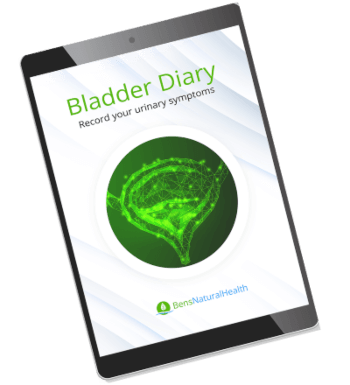If you struggle with recurrent UTIs, you may have used antibiotics many times, but the symptoms can come back again.
There are various supplements and herbs on the market that are said to help with UTIs.
The advantage of these remedies is that they generally have fewer side effects.
They are also less expensive than conventional drugs.
D-mannose is a supplement that is often marketed as a means of reducing your risk of developing UTIs.
But does it really work?
Keep reading to learn about D-mannose for UTIs.
What to know about D-mannose for urinary tract infections
A UTI is an infection that can affect any part of the urinary tract.
When bacteria enter your urinary tract, they latch on using special structures that help them bind to the lining of the urinary tract tightly.
As a result, the bacteria cannot be easily washed off or removed.
D-mannose works by helping to prevent the bacteria from adhering to the wall of the urinary tract, making it easier for the bacteria to be cleared out through the urine.
It does not kill bacteria.
D-mannose is also referred to as mannose. Just like glucose, it is a monosaccharide. This means that it contains only one sugar molecule that cannot be broken down into simpler sugars.
Several studies have shown that D-mannose helps prevent the recurrence of UTIs and has the potential for the treatment of an uncomplicated UTI.
In one study that included 60 women, D-mannose was found to be more effective at preventing recurrent UTIs than trimethoprim/sulfamethoxazole (Bactrim), a type of antibiotic sometimes prescribed for UTIs.
Another study that involved 43 women with active UTIs showed that D-mannose helped reduce symptoms in most women.
It is important to remember that although there are various studies emerging about the effectiveness of D-mannose for UTIs and lots of anecdotal evidence supporting its use, it is not yet FDA-approved.
Get your FREE bladder diary
- Daily bladder diary
- Better understand your urinary symptoms
- Step-by-step guide
How much D-mannose should you take for UTIs?
D-mannose is found naturally in many foods, such as apples, cranberries, broccoli, soybeans, kidney beans, cabbage, tomatoes, coffee, and egg whites.
D-mannose supplements are available in powder and tablet forms and may be used to help prevent a UTI.
Dosage guidelines for D-mannose may vary, but they are often based on clinical studies.
There is the prophylactic dose, which is administered to prevent frequent UTIs and a treatment dose to treat an active infection:
- For prophylaxis, take 2 grams of D-mannose once a day or 1 gram twice daily.
- For treatment of infection, take 1.5 grams of D-mannose twice daily for three days, then daily for the next ten days.
The form of D-mannose you should use is completely up to you. You can take the tablets with a glass of water or a beverage.
If you don’t like swallowing pills or you want to avoid additives in capsules, you can use the powder form.
You can mix the D-mannose powder into water or beverages. The powder easily dissolves in water, leaving a sweet taste.
How long does it take for D-mannose to help a UTI?
You may start noticing a decrease in your symptoms within a day or two after you start taking D-mannose, especially if E. coli is responsible for the infection.
If you do not notice any relief after 48 hours or if symptoms worsen, seek medical attention as soon as possible.
Symptoms of a UTI include:
- Painful urination
- Frequent urination
- Lower abdominal/pelvic pain
- Change in urine color
- Foul-smelling urine
Delaying treatment of a UTI can allow it to spread to the kidneys and blood, two serious conditions that require hospitalization.

Benefits of taking d-mannose
In addition to its use in the treatment and prevention of UTIs, D-mannose may be used for:
Stimulating the growth of gut bacteria
D-mannose can serve as a prebiotic in the intestines. A prebiotic is a substance usually found in food that encourages the growth of good gut bacteria.
Prebiotics cannot be digested by the human gut, but they provide food for bacteria to feed on and grow.
Treatment of some rare hereditary metabolic problems
Glycoprotein syndrome type 1b is a condition in which a particular protein is deficient in the intestines of affected individuals.
It can cause serious problems like bleeding disorders, liver problems, and severe diarrhea.
D-mannose supplements are used to help relieve the symptoms.
Are there any side effects of d-mannose?
D-mannose is generally considered safe. Most people do not have any problems after taking the supplement. However, some people may experience diarrhea and bloating.
Taking high doses of d-mannose may be harmful to the kidneys.
D-mannose is a type of sugar, and, as such, consuming it may have an impact on your blood sugar level. If you are diabetic, speak to your healthcare provider before taking D-mannose.
Not enough studies are available to show its safety in pregnant and lactating mothers. So, it is best avoided in this group of people.
FAQs
You can take D-mannose with or without food. It is a simple sugar that is easily digested in the gut.
Antibiotics can be used together with D-mannose. Some studies suggest that the use of D-mannose alongside antibiotics may help to improve the symptoms of UTIs.
Yes, you can. Probiotics are foods that contain living microbes that help to improve the ‘good bacteria’ in the gut.
Examples of foods that contain probiotics are yogurt, kimchi, and sauerkraut. Probiotics have been shown to have some benefits in the prevention of UTIs.
Prebiotics, on the other hand, are foods that are high in dietary fiber, which act as a food source for the good bacteria in the gut. D-mannose is an example of a prebiotic. Other examples are bananas, whole grains, onions, and garlic.
Some people take D-mannose together with probiotics for better results when trying to prevent UTIs.
D-mannose is not typically associated with increased urination. Urinary frequency is usually a symptom of UTIs resulting from urinary tract irritation.
D-mannose may relieve this symptom by helping to remove the bacteria attached to the urinary tract.
Conclusion
UTIs are among the most common bacterial infections that occur globally. While there are a wide variety of antibiotics available, recurrence and antibiotic resistance can be a challenge. As such, other treatment options for UTIs are being considered.
D-mannose is a simple sugar that is naturally found in many foods. Several studies have shown that it has some benefits in preventing recurrent UTIs and relieving symptoms in those with active infections.
It does not kill the bacteria causing infection. Instead, it works by causing bacteria to detach from the wall of the urinary tract so that they can be washed away by the urine.
D-mannose may help relieve UTI symptoms within a few days. While there is some evidence supporting its use, it’s important to note that D-mannose is not yet FDA-approved.
If you have persistent or worsening symptoms of a UTI, contact your healthcare provider as soon as possible.
Explore More








